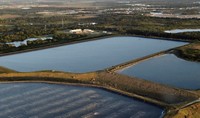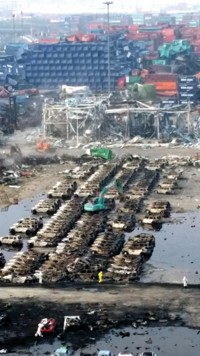Advertisement
Grab your lab coat. Let's get started
Welcome!
Welcome!
Create an account below to get 6 C&EN articles per month, receive newsletters and more - all free.
It seems this is your first time logging in online. Please enter the following information to continue.
As an ACS member you automatically get access to this site. All we need is few more details to create your reading experience.
Not you? Sign in with a different account.
Not you? Sign in with a different account.
ERROR 1
ERROR 1
ERROR 2
ERROR 2
ERROR 2
ERROR 2
ERROR 2
Password and Confirm password must match.
If you have an ACS member number, please enter it here so we can link this account to your membership. (optional)
ERROR 2
ACS values your privacy. By submitting your information, you are gaining access to C&EN and subscribing to our weekly newsletter. We use the information you provide to make your reading experience better, and we will never sell your data to third party members.
Environment
Toxic Spill in Hungary Kills Four
Environment: Breach of aluminium refining tailings reservoir sends poisonous waste through towns, toward Danube River
by Sarah Everts
October 6, 2010

An open reservoir used to store toxic aluminium refining tailings breached Oct. 4 near Ajka, Hungary, flooding the country with an estimated 700,000 cubic meters of highly alkaline sludge that has killed at least four people, and seriously harmed hundreds of residents and the environment. The Hungarian government has declared a state of emergency as toxic mud travels rapidly in tributaries towards the Danube River, facilitated by heavy rains and flooding.
The Ajkai Timfoldgyar Zrt refinery, where the catastrophe occurred, is owned by MAL Magyar Aluminium, which sells aluminium for use in zeolites, glasses, ceramics, and other products used in the chemical industry, according to the company's website.
Aluminum is typically extracted from bauxite ore using sodium hydroxide. For every one ton of aluminium extracted approximately two tons of highly alkaline red sludge is produced, the color of which comes from iron oxide, says Chris Bayliss, of the Aluminium Industry Association, in London.
Normally, the sludge contains heavy metals and "whatever else is found in the rock besides aluminium, which can include copper, zinc, arsenic and sometimes radioactive elements," explains Karen Hudson-Edwards, an environmental geochemist and mineralogist at Birkbeck University of London.
Most refiners allow the tailings to settle in reservoirs open to the environment, until the sodium hydroxide separates from the sludge and can be recovered for future refining or neutralized, Bayliss says.
When the MAL Magyar Aluminium tailings reservoir-sludge containing extremely high levels of sodium hydroxide and low levels of radioactivity poured through several towns, it affected an area of 40 square kilometres, says Csaba Csendes, an official at Hungary's National Directorate General for Disaster Management. "There won't be vegetation in the area for quite a long time," he told C&EN.
In a statement, the MAL Magyar Aluminium notes that according to European Union policies, "red mud is not a dangerous waste." The company also asserts that it could not have predicted nor been able to avert the catastrophe.
According to a Greenpeace statement, Hungary has "two other such refineries with an estimated 50 million cubic metres of similarly toxic red mud in highly sensitive areas close to rivers," which pose a threat to wildlife, wetlands, and safe drinking water.
In the last 40 years, at least 59 major failures of dams on tailings reservoirs occurred worldwide, Hudson-Edwards notes. She says many of the failures have resulted in long-term damage to ecosystems, significant impact on nearby communities, and the loss of nearly 700 lives. For example, in 2000, a tailings reservoir containing waste from Romania's Baia Mare Aurul gold mine released cyanide containing waste water in to a major Hungarian river. In 1998, a break in a zinc and silver mine tailings reservoir released more than a million cubic meters of acid effluent near Aznalcóllar, Spain.





Join the conversation
Contact the reporter
Submit a Letter to the Editor for publication
Engage with us on Twitter